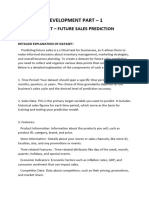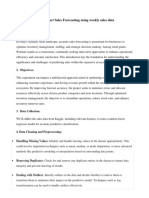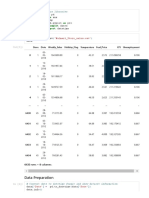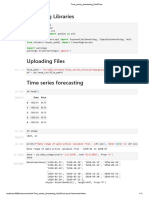0% found this document useful (0 votes)
15 views2 pagesTSA Assignment
The document outlines a Python script that analyzes monthly sales data for three business units (BU1, BU2, BU3) from a CSV file. It includes steps for loading the data, creating a datetime index, checking for stationarity using the ADF test, fitting SARIMAX models, and forecasting sales for the first three months of 2018. Finally, it visualizes both historical and forecasted sales data for each business unit.
Uploaded by
Finn HouriganCopyright
© © All Rights Reserved
We take content rights seriously. If you suspect this is your content, claim it here.
Available Formats
Download as TXT, PDF, TXT or read online on Scribd
0% found this document useful (0 votes)
15 views2 pagesTSA Assignment
The document outlines a Python script that analyzes monthly sales data for three business units (BU1, BU2, BU3) from a CSV file. It includes steps for loading the data, creating a datetime index, checking for stationarity using the ADF test, fitting SARIMAX models, and forecasting sales for the first three months of 2018. Finally, it visualizes both historical and forecasted sales data for each business unit.
Uploaded by
Finn HouriganCopyright
© © All Rights Reserved
We take content rights seriously. If you suspect this is your content, claim it here.
Available Formats
Download as TXT, PDF, TXT or read online on Scribd
/ 2


























































